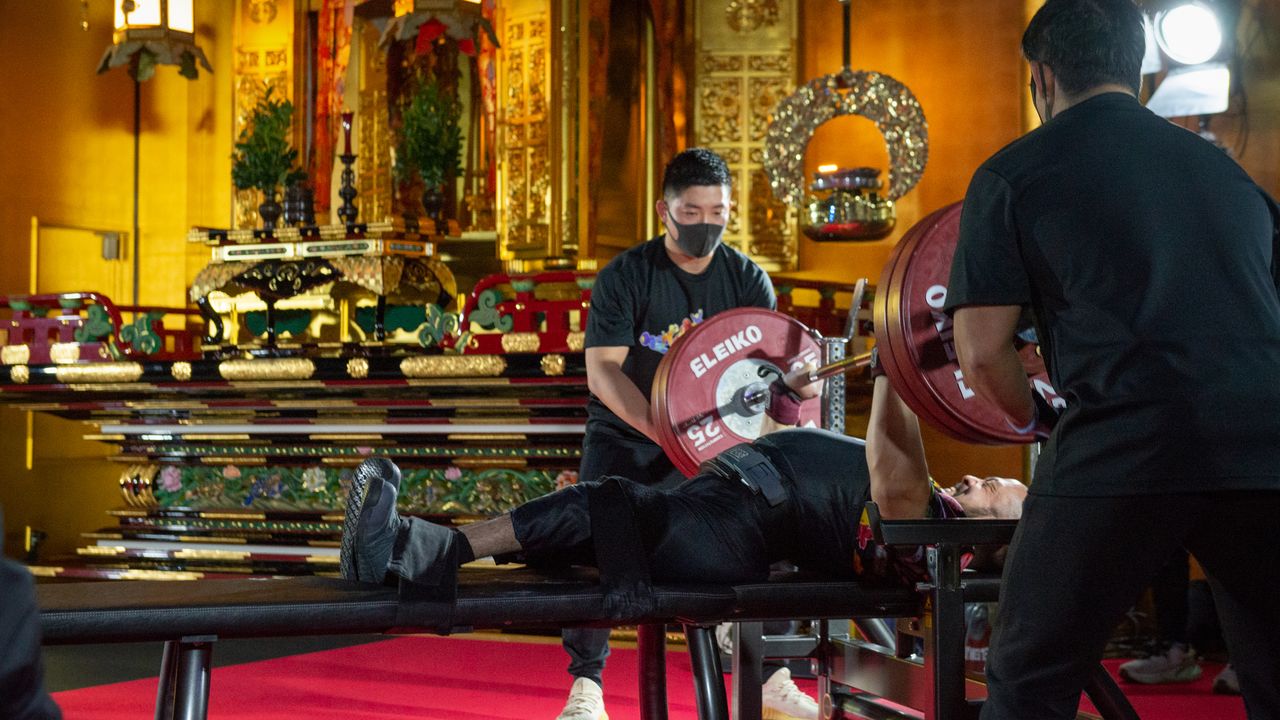
Para Powerlifting Competition Held at Tsukiji Temple: Athletes Break Records at the Buddhist Altar
Sports Culture- English
- 日本語
- 简体字
- 繁體字
- Français
- Español
- العربية
- Русский
New Japanese Records Established
The Japan 2023 National Para Powerlifting Competition was held on January 29, 2023, at a special venue set up within Tsukiji Honganji, a temple in Chūō, Tokyo.
Para powerlifting was first adopted as a formal event at the 1964 Tokyo Olympics. Competitors with leg and other disabilities compete to see who can bench press the heaviest weights. Japanese athletes who competed in the Tokyo 2020 Paralympic Games and specially invited athletes from overseas participated in the event, the results of which counted toward their world rankings.
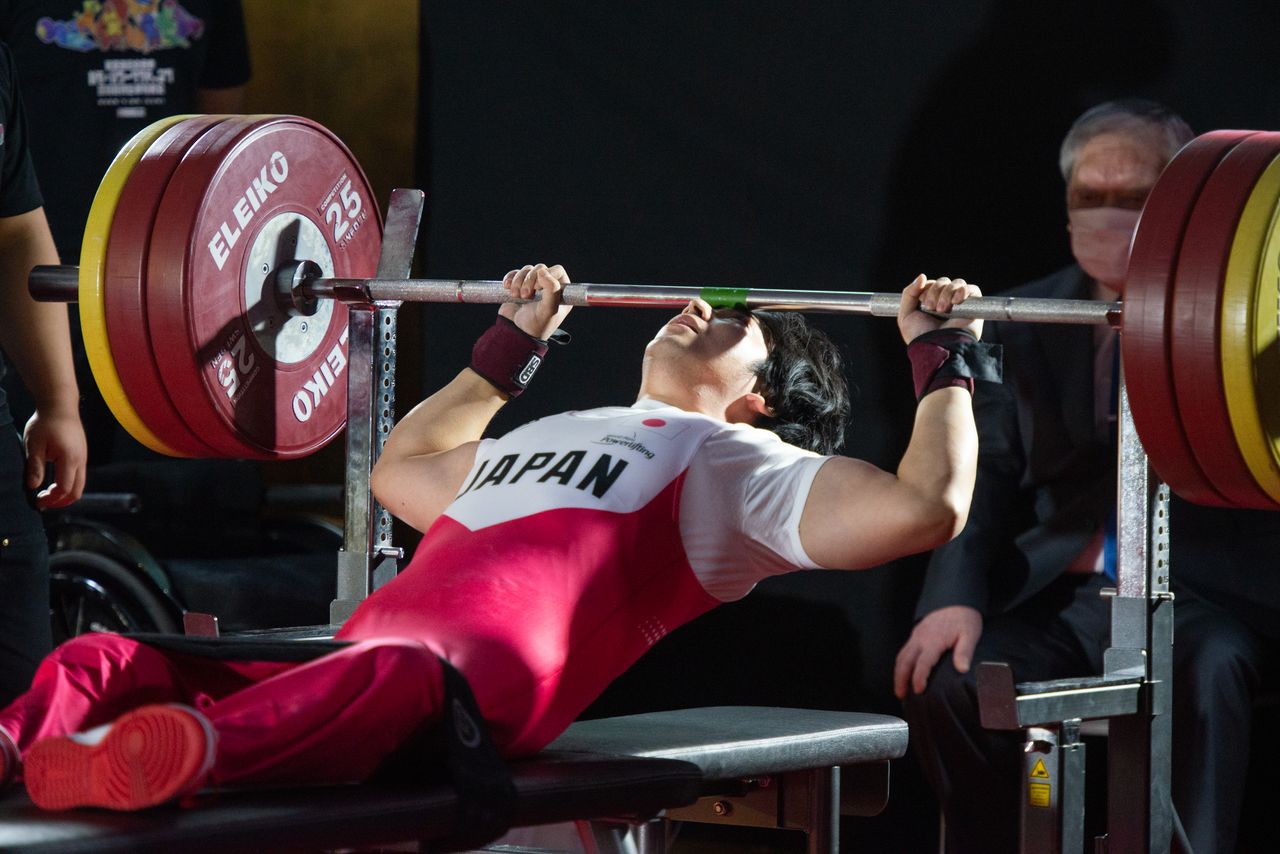
Kōse Tomohiro, Japan record holder in the men’s 59-kilogram class, set a new record at the event. (© Kodera Kei)
Tsukiji Honganji is a Jōdo Shinshū temple that was founded in 1617. Its Daini-Dendō, a hall where memorial services and other ceremonies are normally held due to the fact that the temple’s statue of Amida-nyorai (Amitābha) is enshrined there, served as the competition space. On the day of the event, local children escorted competitors into the venue and a projection-mapping display entertained the crowds on hand for the lifting.
Miura Hiroshi, who competed in the men’s 49-kilogram class, shared his impressions. “There is a certain tenseness that comes from the venue being a sacred space,” he said. “Throughout the competition I kept in mind the volunteers who helped out and the many people who contributed to the crowdfunding effort.”
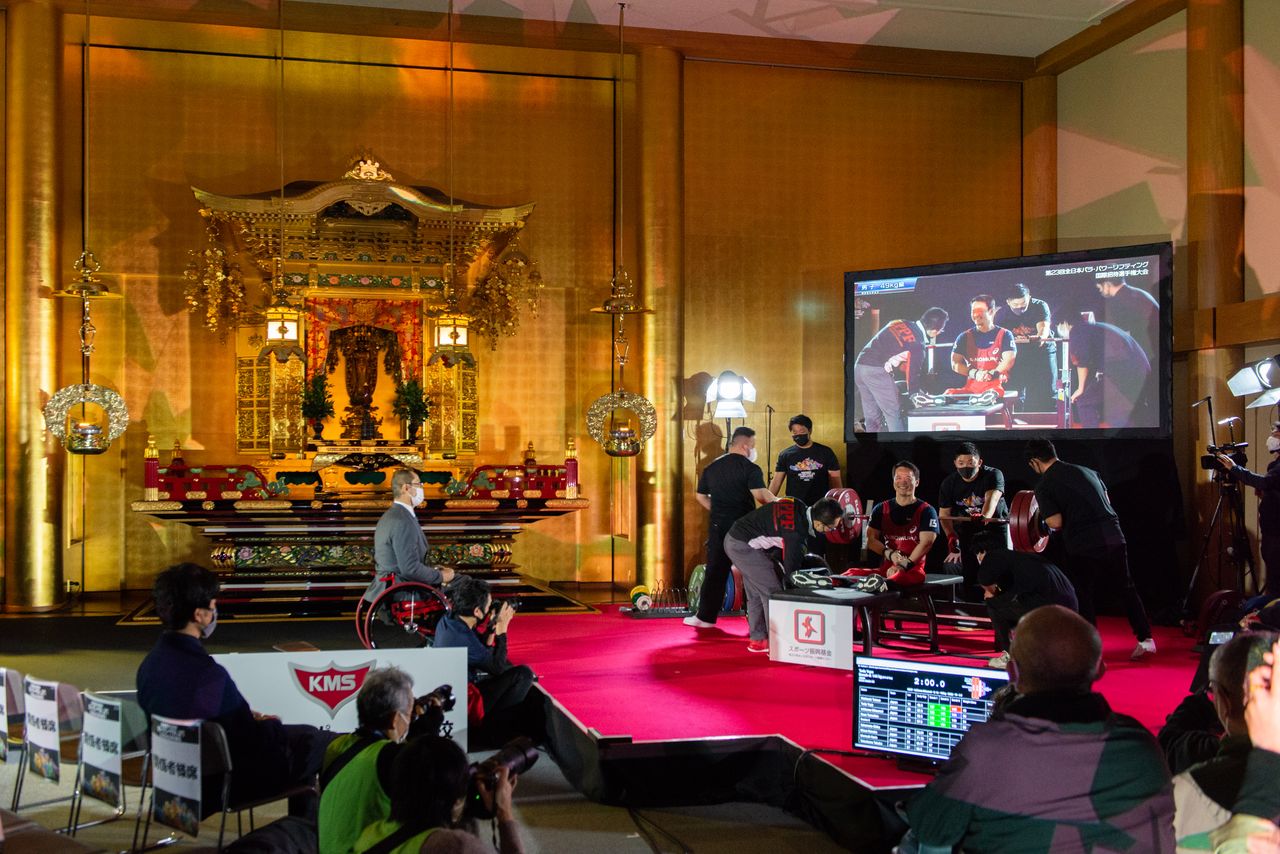
Athletes competed under the watchful gaze of spectators, the press, and Amitābha. (© Kodera Kei)
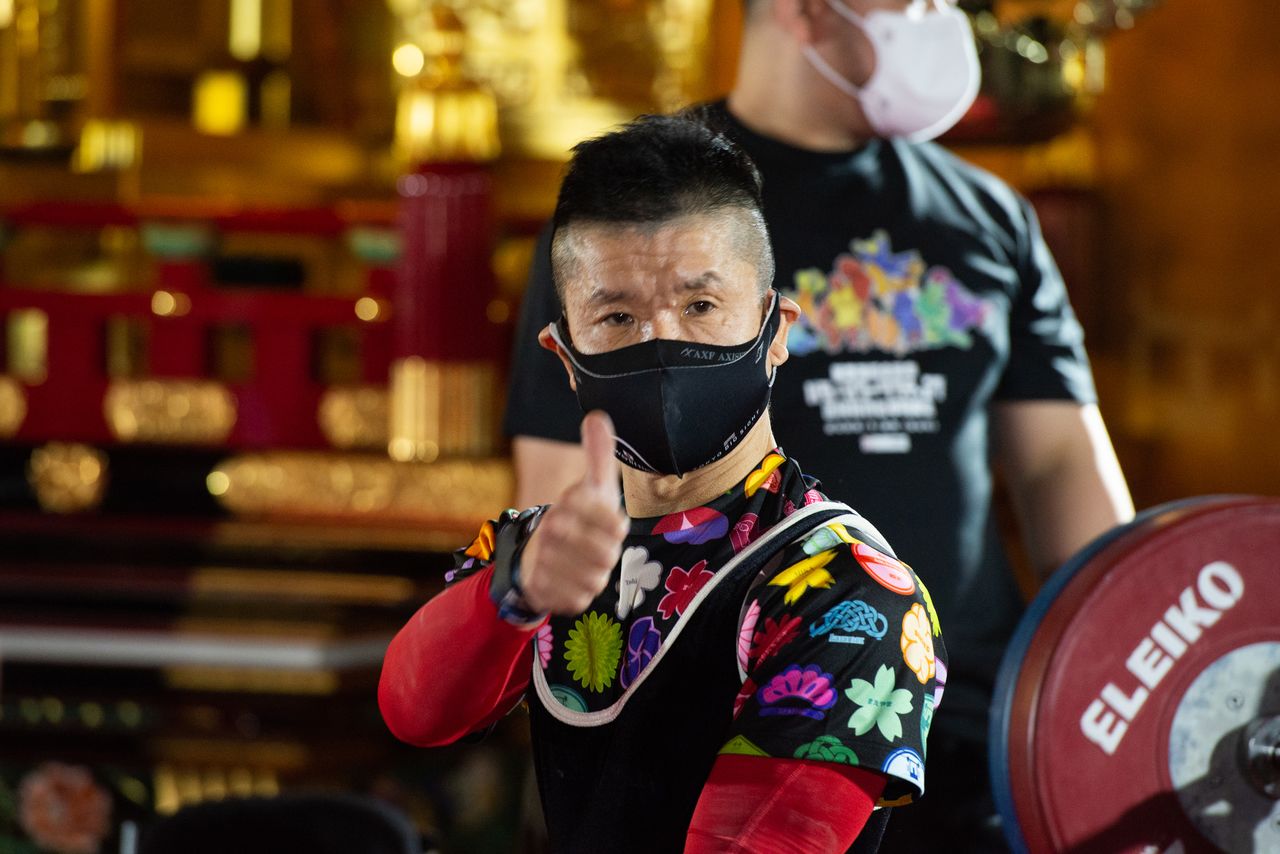
At the age of 58, Miura Hiroshi was the oldest competitor. A legend in the sport, he has competed in three consecutive championships, including the 2020 Tokyo Paralympic Games. (© Kodera Kei)
Overcoming Barriers of Religion, Race, and Disability
Tsukiji Honganji sits within spacious, wide-open temple grounds. Facilities like a chic cafe with terrace seating are part of the temple’s goal of becoming “open to everyone.” It originally considered supporting para sports with this same objective in mind.
The first para sports event to be held in Japan at a historical Buddhist temple came to fruition thanks to Miura, who proposed the idea after giving a lecture at the temple. The priest Higashimori Shōnin, who serves as the temple’s deputy director for religious affairs, said that the proposal “provided an opportunity to check the barrier-free facilities available at the temple, making sure it’s available without obstacle to everyone, including those with physical disabilities.”
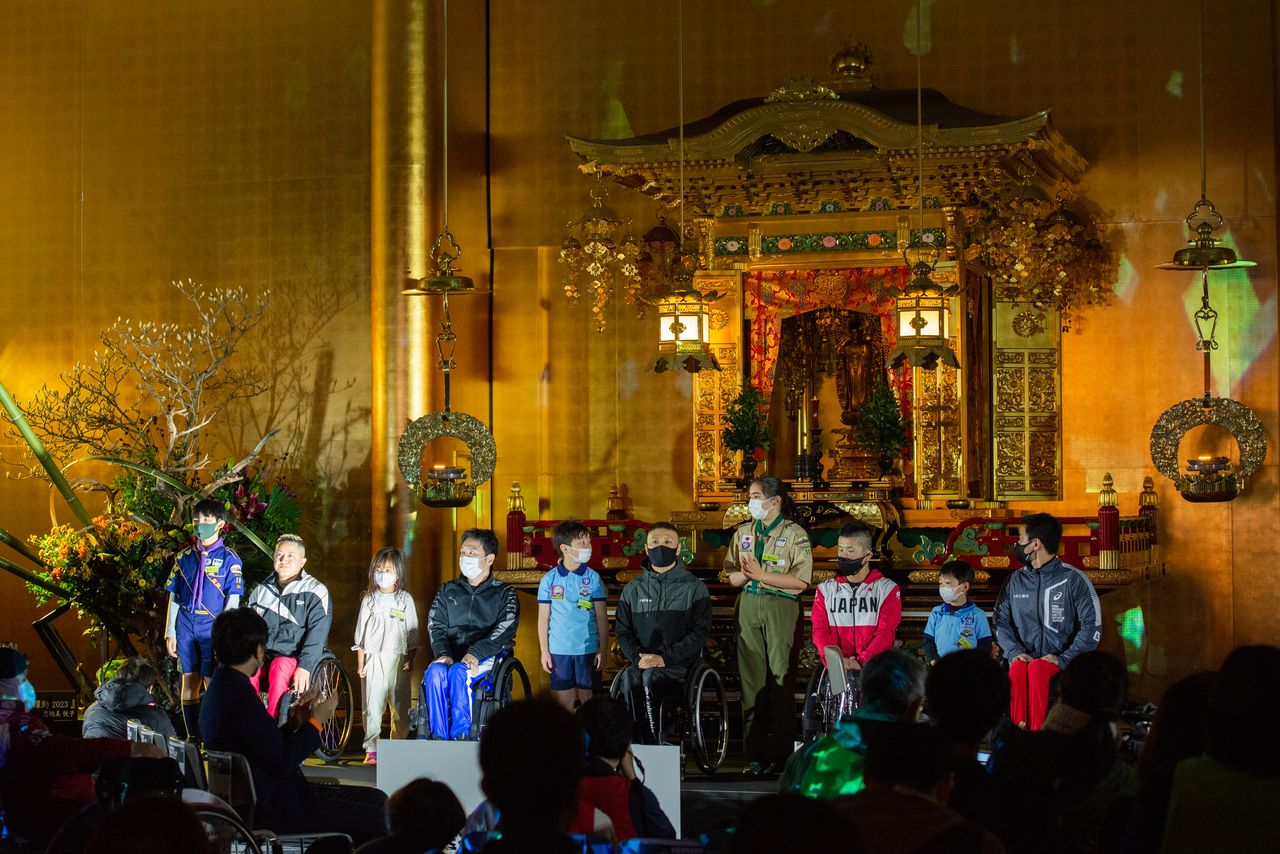
Boys and girls escorted the athletes into the venue and introduced them to the spectators. (© Kodera Kei)
Since athletes from outside Japan also participated in this unique event held in the presence of Buddhist statuary, the Japanese Para Powerlifting Federation—which sponsored the event—suggested the catchphrase “Overcoming the three barriers of religion, race, and disability.” Due to the COVID-19 pandemic, it was the first event in three years to have a live audience. That, in addition to the unique venue, led to so much interest that advance tickets sold out.
Nishizaki Tetsuo, a competitor in the men’s 49-kilogram class, was the subject of particularly enthusiastic cheers as he attempted a 140-kilogram lift exceeding his own Japan record. “I had no confidence that I could do it,” he said. “But the support of the fans gave me a lot of encouragement.” Although he did not succeed in this lift, he was spurred on with thunderous applause.
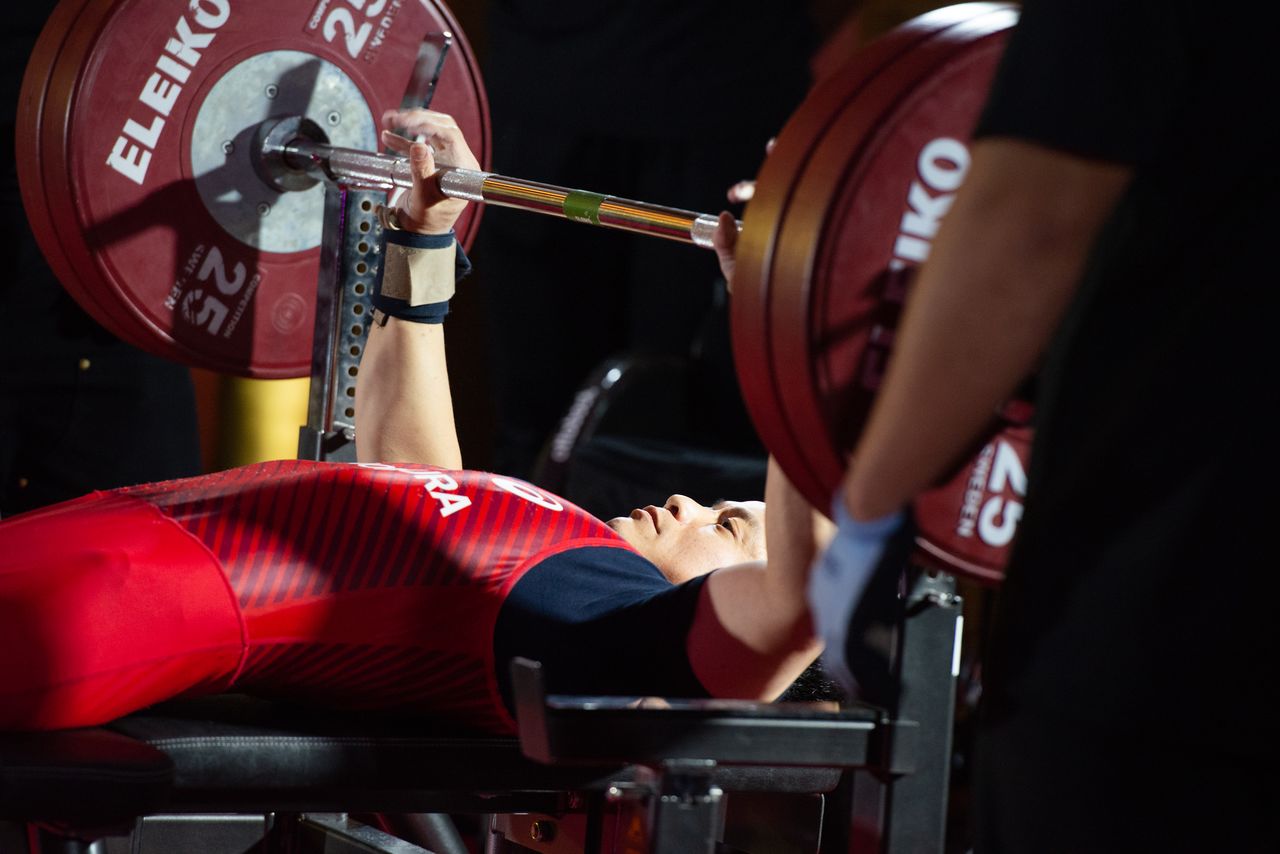
Nishizaki, seemingly calm as he begins a potentially record-breaking lift. (© Kodera Kei)
In the mens’ 59-kilogram class, Kōse Tomohiro, who previously competed at the 2020 Tokyo Paralympics, succeeded in a 154-kilogram lift, which exceeded his own previous Japan record. “I managed to do it thanks to everyone’s cheers,” he said. “At the 2024 Paris Paralympics I hope to become the first Japanese competitor to bring home a medal.”

Kōse Tomohiro (left) after being awarded the gold medal at the awards ceremony for the mens’ 59-kilogram class. (© Kodera Kei)
(Originally published in Japanese. Reporting and text by Nippon.com. All photos © Kodera Kei.)